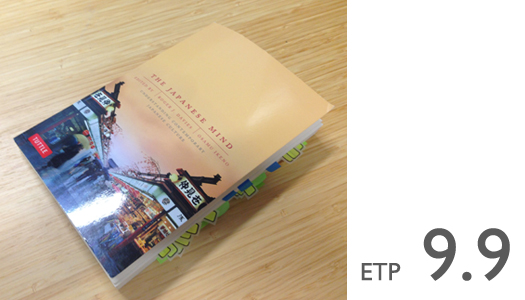I discovered this book while searching for tourist-type guides to Japan. It is a great find and became my primary read immediately. This is a collection of essays – each of which contain reflections on the Japanese culture, sometimes in comparison to Western culture. “The Japanese Mind” in fact contains a series of student essays (that feel were smoothed out by the editors, Davies and Ikeno) which each generally contain insights, meanings and socio-cultural influence. Reading this book was a marvelous learning experience and will add emphasis on cultural viewpoints to our YCISL workshop.
“Ambiguity is thus indispensable for maintaining harmony in Japanese life, where it has the quality of compromise.” I usually associate “ambiguity” with negative consequences (specifically in the context of Outliers by Malcolm Gladwell and Geerte Hofstede’s Cultural Dimensions), but now can appreciate the relation to positive influences such as harmony and compromise. It is fascinating to think of ambiguity as a skill where one has to be facile in both creating it and dealing with it.
“Silence can also be considered a kind of ambiguity.” In our YCISL workshops, silence usually feels awkward to me but it happens especially at the start of the workshop. In my next workshop, I will think more carefully about the meaning behind the silence and whether it provides any hints to the students’ mindsets.
“As a result, there is a constant emphasis on other people’s feelings in Japan, and parents try to teach their children from a very early age to be sensitive to this information.” While YCISL includes exercises to practice assertiveness, our desire to grow emotional intelligence fits well with any tendency to be highly (or even overly) considerate of the feelings of another person. We can look at this from the perspective of training skilled empathy which includes awareness as well as self-control and sensitivity.
“Until they graduate from elementary school, they are generally not completely conscious of these vertical relationships. However, as soon as they enter junior high school, they are expected to confirm to this rigid system.” This suggests that the timing of YCISL intervention at early high school is perfect. Parents and teachers need to believe that when creative behavior, motivation and productivity are desired, the vertical relationships need to be relaxed.
“Simplicity and elegance are often considered two of the essential aesthetic qualities of Japanese culture, and they have been important features of Japanese life since ancient times.” I would like to try to emphasize simplicity and elegance in all YCISL activities – from our concepts and exercises to the projects and lessons. With these two attributes, we can expect greater teamwork and leadership as well as clearer purpose and deeper passion.
“However, this also inspired a positive attitude toward such desolation in treasuring the beauty that was out of sight.” Being able to value things not in plain sight is a key to innovative thinking. In the case of prototyping where we understand the practical advantages of “fail early, fail fast” and moving on despite obstacles and failures, deriving a positive attitude in these situations is a valuable skill in creating unique solutions in problem-solving.
“Although millions of people continue to learn calligraphy, tea ceremony, and flower arrangement, most do so not to develop their own distinct inner sense of beauty but simply as an imitation of models.” In YCISL, we should seek to develop this inner sense of beauty as part of our exploration for creative energy; this is possible in YCISL because we do not have a rigid model.

